Background on Chile’s Wine Regions
Wines that come from Chile’s various flavor-prone regions have long been undervalued. But there’s something special emanating from the gorgeous terroirs of Chilean Wine Country. Something that has vast wine markets — such as China — thirsty for something fresh and complex.
It may be some time before the entire world warms up to Chilean wine regions and their offerings – but as the world begins to recognize that you don’t need to pay over $15 for a great bottle of wine, Chile will become a more prominent New World player.
- Background on Chile's Wine Regions
- Chilean Wine Region Geography
- Chilean Wine Country Terroir & Climate
- Chilean Wine Country Appellations
- Atacama Region
- Coquimbo Sub-Regions
- Aconcagua Sub-Regions
- Central Valley Sub-Regions
- Chilean South Region and Austral Region
- Wine Grape Varieties Grown in Chile
- Well Known Chilean Wine Brands and Wineries
Chile is considered a New World wine region, as it was not until the 16th century that the Spanish brought various vines with them as they began to colonize the region. More recently, an assortment of French grape varieties were introduced to many of Chile’s wine appellations – once it was discovered that they could easily thrive here.
Since the 19th century, native Chileans have enjoyed a rich wine market within the country. Much of the rest of the world didn’t become aware of the quality and value of Chilean wine until the 1980s when the export market around the world, especially within the United States, began to improve.
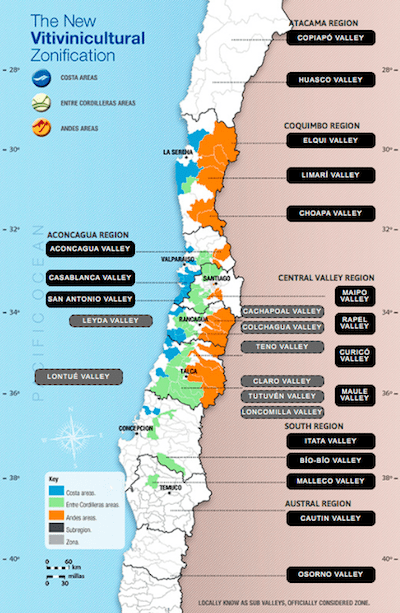
Chilean Wine Region Geography
The majority of Chile’s vineyards are centrally located within the country. That’s because many of the central regions – which make up almost all of the individual wine appellations (sub-regions) – are flanked by both the Andes Mountain Range to the East and the Pacific Ocean to the West.
Up north, the wide-spread Atacama Desert provides a natural border, while the glaciers and frigid temperatures of Patagonia guard the Southern end of the country.
RELATED: 15 Tips to Plan the Perfect Wine Vacation
The unique geographical situation of Central Chile allows for not only an assortment of ideal micro-climates for wine growing, it provides natural protection and more predictable weather patterns within each sub-region. By predictable, I mean in no way that these weather climates are particularly stable. I just mean that winemakers here are able to anticipate varying degrees of weather.
Note that from a north to south perspective the climate and terroir varies widely. Within the individual regions, vintners have begun to master the art of winemaking within their unique terroirs.
All in all, from north to south, Chile extends for over 2,600 miles and only a mere 177 miles east to west. This expansively long landscape traverses rolling hills, snowcapped peaks, green valleys and sandy shores.
Chilean Wine Country Terroir & Climate

Chilean wine regions experience a Mediterranean climate. In short, this style of climate offers long, warm, sunny days followed by starkly cool evenings during the growing season. This type of climate is ideal for growing a variety of wine grapes, as it helps reveal some of the bright, juicy-fruit flavors backed by chewy tannins present in many South American New World wines.
While a Coastal mountain range lines a good portion of Chile’s Pacific Coast, sheltering much of the inland sub-regions from cool ocean winds – a very strong current – dubbed the Humboldt Current, flows Northwards from Antarctica along Chile’s coastline. If it wasn’t for the Humboldt Current, cool ocean breezes would have no way to penetrate inwards through the various river systems that traverse the sub-regional valleys and Coastal mountains.
Below, we’ll break them down north to south and one by one while providing some of the more pertinent information about each Chilean wine sub-region.
Chilean Wine Country Appellations
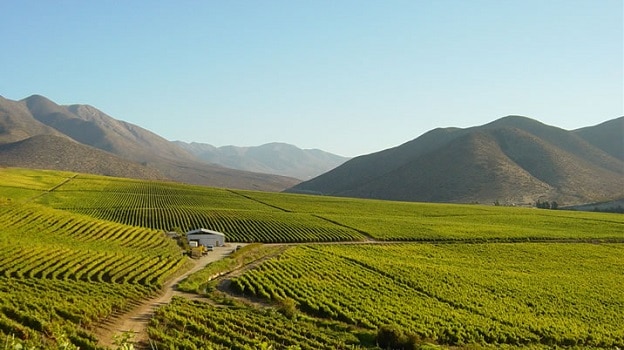
Atacama Region
Situated in the northernmost part of Chile’s wine-producing areas, the Atacama Region stands as a testament to the diversity and adaptability of the country’s viticulture. Here, vineyards are carved into a landscape more known for its desolate beauty and extreme arid conditions. The Atacama is the driest desert on earth, and yet, against all odds, the region is home to vineyards that not only survive but thrive, thanks to the ingenuity of local viticulturists and the miracle of modern irrigation techniques.
Copiapó
In the heart of the Atacama Region lies the Copiapó Valley, an oasis amidst the arid desert landscape. Despite the area’s limited rainfall, the Copiapó River provides vital irrigation, allowing for the cultivation of grapevines. The valley is known for its production of table grapes, but recent years have seen an increase in wine grape cultivation, with varieties like Syrah, Cabernet Sauvignon, and Sauvignon Blanc demonstrating promising potential. The wines from Copiapó capture the essence of this desert terroir, displaying concentrated fruit flavors and surprising complexity.
Huasco
To the west of the Atacama Region, the Huasco Valley unfolds, tempered by the cooling influence of the Pacific Ocean. The valley enjoys a desert climate with a significant diurnal temperature range, which helps preserve the acidity and aromatic complexity of the grapes. Primarily known for its Pisco production, the Huasco Valley is gaining recognition for its unique wines, with varieties like Moscatel de Alejandría playing a starring role. These wines present a high aromatic intensity and a freshness that belies the region’s desert conditions, offering a singular expression of Chilean viticulture.
Coquimbo Sub-Regions
Elqui Valley
Located near the Southern tip of the Atacama desert, the Elqui Valley has only been cranking out wine since around 1990. Being so close to the desert, it’s warmer and far drier than many of its more Southern counterparts. Rainfall rarely exceeds 3 inches annually, and the soil here is primarily a rocky composition. Vines grow here both near the coast, as well as at elevation along the Andes mountains, where the hills are cooled by funneled winds coming down from the Andes and across from the Pacific. Much of Chile’s “Pisco” liquor is made in Elqui, in addition to increasing amounts of Syrah grapes which respond well to the cool air coming down from the Andes. A fair amount of Sauvignon Blanc is also grown throughout the Elqui Valley.
RELATED: Learn About Spain’s Rioja Wine Region
Limarí Valley
On the white front, Chardonnay reigns kind in Limarí, followed closely by Syrah and Cabernet Sauvignon plots. Each morning during the growing season, a fog called Camanchaca approaches from the Pacific and covers much of the vine acreage in the area. When the sun finally appears over the Andes mid-morning, the fog goes back into hibernation. Even though Limarí is a little further away from the Atacama desert, rainfall here is still minimal. Vintners resort to a form of drip irrigation that forces the grape vines root to work for their nutriment in the calcareous soil. This helps create refined and complex mineral-rich wines.
Choapa Valley
A small, up-and-coming sub-region, the Choapa Valley is dominated by mostly Cabernet Sauvignon and Syrah plantings. While vine acreage is small, and no actual wine-producing facilities exist in the area, some of the most refined Syrah in Chile is being cultivated beneath the Andes.
Aconcagua Sub-Regions
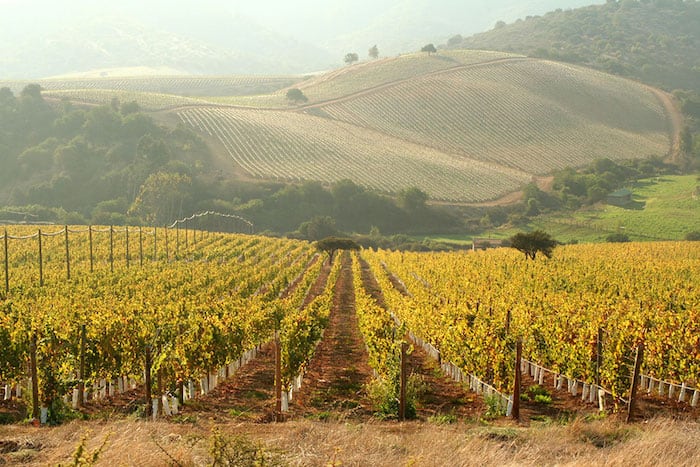
Aconcagua Valley
Aconcagua manages to receive a bit more rainfall each year than its Northern brethren. In addition, it receives an abundance of freshwater that trickles down from Mount Aconcagua throughout the year. Towards the center of the valley, Cabernet Sauvignon, Syrah, Cabernet Franc and Pinot Noir are grown in earnest. Closer to the Pacific, growing acreage of Sauvignon Blanc and Chardonnay are both beginning to gain notoriety.
Aconcagua Costa
The Aconcagua Costa, a smaller sub-region of the larger Aconcagua Valley, is a distinctive viticultural paradise. Nestled in the westernmost portion of the valley and situated not far from the Pacific Ocean, the region boasts a unique terroir that harnesses the cool, maritime influences. Much like its parent region, Aconcagua Costa receives its fair share of rainfall, with a stream of additional freshwater from the mighty Mount Aconcagua serving as a lifeline for the vineyards.
Dotted across its landscape, you will find an impressive range of varietals, largely dominated by cool-climate varieties. The western parts of Aconcagua Costa, in particular, have begun to make a name for themselves with their exceptional Sauvignon Blanc and Chardonnay. The cool coastal breezes and morning fog work in harmony to allow these grapes to ripen slowly, enhancing their unique aromas and acidity.
As you travel further inland, you’ll discover an assortment of red grapes, including Pinot Noir, which thrives in the region’s cooler microclimates. This particular varietal is grown with meticulous care and has developed a reputation for creating wines with a notable depth and complexity. Yet, the crown jewel of the Aconcagua Costa might be its Syrah. The grape has found a comfortable home here, where the cool maritime influence and granitic soils combine to produce a Syrah with peppery notes, fresh acidity, and velvety tannins.
Casablanca Valley
One of my personal favorite wine-growing areas, the Casablanca Valley saw its first wine grapes during the 1980s. Here, cool Pacific winds are accessible to the low-lying areas of the valley, enhancing beautiful Chardonnay, Sauvignon Blanc and increasing amounts of Gewürztraminer and Pinot Gris. In addition to the cooler climate, rainfall here is a bit more frequent and white wines tend to have a stony tilt thanks to the soft clay and sandy soils in the region.
San Antonio Valley
A coastal sub-region, the San Antonio Valley offers Vintners a more temperamental climate given its proximity to the nearby Pacific Ocean. This area is best known for producing refined Sauvignon Blanc and Chardonnay on the white wine side, while winemakers who are able to master Pinot Noir’s fickle temperament can produce great quality, mineral forward dry, refreshing and light-bodied reds.
Leyda Valley
The Leyda Valley, a sub-region within the broader San Antonio Valley, is a gem on the Chilean wine map. This coastal locale, deeply influenced by the Pacific Ocean, enjoys cool and steady temperatures, allowing grapes to ripen slowly and reach their full potential. Particularly known for its Sauvignon Blanc and Pinot Noir, the Leyda Valley is also earning praise for its Chardonnay and Syrah. The valley’s chilly, oceanic breezes and distinct soil – a unique blend of clay and loamy textures with a high proportion of decomposed granite – yield wines with remarkable freshness, minerality, and a real sense of place. The area’s unique geographic characteristics, combined with the passionate efforts of its winemakers, imbue the Leyda Valley’s wines with a character and depth that are not just notable, but truly memorable.
Central Valley Sub-Regions
Maipo Valley
A popular destination for both locals and tourists, the Maipo Valley is quite close to the city of Santiago. It’s divided further into three sub-regions: Alto Maipo, Central Maipo and Pacific Maipo. Each sub-region is known to produce wines of great quality (though often undervalued). Cabernet Sauvignon does exceedingly well in Alto Maipo and also holds the most acreage, while the rest of the region produces quality Merlot, Carménère and Syrah – in addition to smaller quantities of Pinot Noir, Cabernet Franc, Chardonnay, Sauvignon Blanc and Malbec.
Alto Maipo
Perched high in the Andean foothills, the Alto Maipo region is a haven for premium wine production. Here, altitude is key. The vineyards, sitting 400 to 800 meters above sea level, are granted cooler temperatures and wide diurnal temperature ranges, allowing for a long, slow ripening season. The most iconic grape of the area is undoubtedly the Cabernet Sauvignon. Wines from Alto Maipo express themselves with an enviable balance of power and elegance, offering rich fruit flavors, structured tannins, and a beautiful, distinct minerality, all products of the region’s stony, alluvial soils. If you appreciate Cabernet Sauvignon with a touch of the Old World’s austerity blended with the fruit-forward character of the New, Alto Maipo is a destination not to be missed.
Central Maipo
At the heart of Chile’s winemaking industry lies the Central Maipo, a region steeped in history. This is where the country’s viticultural journey began, and the legacy continues as the region produces some of the country’s most distinguished wines. Known for its warm climate and alluvial soils, Central Maipo provides ideal conditions for red varietals, with a focus on the Bordeaux blends, especially Cabernet Sauvignon. Merlot and Carmenère also find comfortable homes in this region, yielding wines with great depth and complexity. Wines from Central Maipo are known for their intense, ripe, red fruit character, layered with notes of chocolate and spice, making them a charming, delightful, and truly Chilean experience.
Pacific Maipo
Where the Maipo River meets the sea, you will discover the Pacific Maipo, an exciting region making a name for itself in the world of wine. The proximity to the cold Pacific Ocean imbues this area with a cool, maritime climate, resulting in wines with high acidity and a pronounced freshness. Here, the late-ripening Cabernet Sauvignon takes a unique expression – displaying vibrant, red fruit character with a certain salty tang brought by the sea breeze. Meanwhile, the cool coastal influence has also proven to be a boon for white grapes, notably Sauvignon Blanc and Chardonnay. These grapes produce wines with a lively acidity and crisp, clean flavors, enriched by the ocean’s touch. Discovering Pacific Maipo is like unearthing a treasure chest of unique, characterful wines that are just beginning to capture the world’s attention.
Rapel Valley
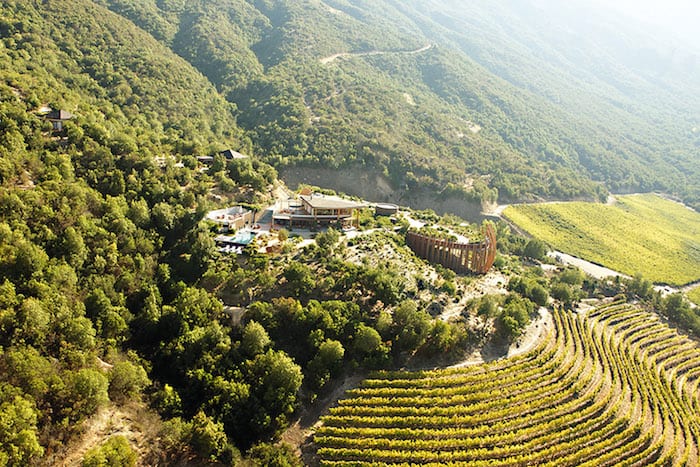
The Rapel Valley offers Vintners an opportunity to craft beautiful reds given the two micro-climates offered in the area. Northern Rapel, also known as Cachapoal Alto, produces beautiful Cabernet Sauvignon. You’ll find a lot of reds at many major wine wholesalers from this region. Separately, as you get near the mountains by the Pacific and towards the Southern Colchagua Valley, plantings of Carménère increase substantially. Carménère is actually one of Chile’s most sought-after varietals, as it’s one of the few New World regions that has succeeded in producing varietal versions of the red grape in earnest.
Cachapoal Valley
Tucked within the Rapel Valley, Cachapoal Valley’s natural beauty is matched only by the superb quality of its wines. This region, predominantly nestled within the Andean foothills, is renowned for its red wines, particularly its Merlot and Carménère. These wines often display a wonderful combination of ripe black fruit, smooth tannins, and a touch of spice.
Not to be overlooked, however, the high-altitude areas of Cachapoal have begun to successfully cultivate elegant and expressive Syrah. Winetravelers visiting the Cachapoal Valley can not only expect a tasting journey through these deep, alluring red wines but also a treat for the eyes, with stunning views of vineyards nestling amidst the majestic Andean peaks.
Colchagua Valley
A visit to the Colchagua Valley is a journey to the heart of Chile’s wine country. Known worldwide for its luscious, full-bodied reds, particularly Carménère, Cabernet Sauvignon, and Syrah, this region is a must-visit for those who appreciate rich, bold flavors and wines with a strong sense of terroir. The secret to the valley’s success lies in its climate – hot, sunny days followed by cool nights, a combination perfect for ripening red grape varieties.
The wines here are characterized by their ripe fruit flavors, velvety tannins, and spicy undertones, often with an elegant hint of oak. However, the Colchagua Valley offers more than just a taste adventure. The landscape is breathtaking, with endless vineyards set against the backdrop of the towering Andes and Coastal Range mountains.
The valley is also known for its warm hospitality, with a number of wineries offering top-notch accommodations, wine tours, and gastronomic experiences. Here, the old and new come together in harmony – from traditional horse-driven vineyard tours to state-of-the-art wine spas. As you delve into the local cuisine, pairing exquisite meals with the region’s fine wines, you’ll be immersed in the rich Chilean culture. Each visit to the Colchagua Valley is a multi-sensory experience, an unforgettable journey of flavors, sights, and delights that serve as a testament to Chile’s vibrant winemaking scene.
RELATED: Best Wine Hotels & Vineyard Resorts to Stay at Around the World
Curicó Valley
Probably most noted for playing host to San Pedro Winery, the Curicó Valley is also one of Chile’s longest standing. It is arguably the most important region with regards to paving the way for the rest of Chile’s expansion into growing wine. Cabernet Sauvignon holds the most acreage here, closely followed by Sauvignon Blanc plantings. Most of the wines produced here tend to be well balanced, given the more tame Mediterranean and consistent climate.
Teno Valley
Nestled within the broader Curicó Valley, the Teno Valley enjoys a moderately warm climate with cool nights, courtesy of the Pacific Ocean influence. This microclimate is ideal for an array of grape varieties, but the region truly shines when it comes to its red wines. Varieties such as Merlot, Cabernet Sauvignon, and Carménère flourish here, producing wines that are ripe and full-bodied, often showcasing dark fruit flavors, balanced acidity, and smooth tannins.
The Teno Valley is characterized by its beautiful landscapes, with vineyards stretching across rolling hills and along the Teno River. The experience here is of a serene and pastoral tranquility, allowing visitors to immerse themselves in the peaceful rhythm of viticulture.
Lontué Valley
The Lontué Valley is another charming sub-region within the Curicó Valley, known for its diverse array of grape varieties. Its viticultural success can be attributed to the cooling influence of the Coastal Range and the unique clay and sandy-loam soils. Lontué’s moderate climate creates an ideal environment for both red and white varieties, including Cabernet Sauvignon, Merlot, Chardonnay, and Sauvignon Blanc. These wines often display a balance of fruit-forward flavors and refreshing acidity, a hallmark of the valley’s cool climate.
Winetravelers exploring the Lontué Valley can expect not only a diverse wine tasting experience but also the chance to explore its picturesque landscapes, where vineyards are intertwined with the native flora along the riverbanks of the Lontué River, providing a beautiful backdrop for an unforgettable wine journey.
Maule Valley
Another one of the larger sub-regions of Chilean Wine Country, the Maule Valley contains extensive plantings of Cabernet Sauvignon. It’s also one of the few regions actively producing smaller quantities of Carignan. These wines are elegantly fruit-forward and grow within sandy and clay-based soils. Malbec from the Maule is also always worth a try.
Coastal Maule
Gazing out towards the expansive Pacific Ocean, the Coastal Maule region benefits greatly from its maritime proximity. The cool oceanic breezes and frequent fog temper the warm afternoon sun, together creating a well-balanced, moderate climate that serves as an excellent stage for growing grapes. País and Carignan, two grape varieties steeped in tradition, find themselves particularly at home here. Wines produced in Coastal Maule capture the essence of these varietals, brimming with bright, fruit-forward flavors and a certain vigor that makes them stand out. The region’s granitic soils impart a noticeable minerality, adding another layer of complexity to these wines. As visitors explore the vineyards, they’ll find a landscape that’s as captivating as the wines it produces, where the vine-clad hills meet the horizon, and the melody of the Pacific Ocean plays in the background.
Claro Valley
The Claro Valley, cradled by the flowing Claro River, is a wine region characterized by a unique combination of natural influences. The warm daytime temperatures are mitigated by cooler nights, creating an environment that allows grapes to mature gradually while preserving their acidity. Carménère, Cabernet Sauvignon, and Syrah are grown extensively in this region, each benefiting from the valley’s fertile soils. The wines they produce encapsulate the character of the Claro Valley, with a delicate equilibrium of ripe fruit, lively acidity, and an earthy hint that’s a testament to the fertile riverbanks. Visitors to the valley will find themselves immersed in a tranquil landscape, where neatly rowed vineyards coexist with the region’s lush vegetation, providing a serene backdrop to the sensory delight of tasting and discovering the region’s wines.
Chilean South Region and Austral Region
The South and Austral Regions of Chile represent different geographical and climatic zones in the country’s wine production, and each offers its unique challenges and opportunities for viticulture.
The South Region, extending from the Maule Region to the Bío-Bío Region, is a more traditional and established area of Chilean wine production. Its temperate climate and favorable conditions for viticulture have made it a popular place for the cultivation of a wide range of grape varieties. The South Region includes well-known wine-producing areas like Itata, Bío-Bío, and Malleco valleys, where old vines of País, Carignan, and Moscatel grow alongside international varieties like Cabernet Sauvignon and Merlot. The wines from this region often showcase the balance between ripe fruit flavors and bright acidity, typical for wines from moderate climates.
On the other hand, the Austral Region, comprising Cautín and Osorno, is a frontier in Chilean winemaking. It is located further south and thus experiences a cooler, more humid climate with higher annual rainfall. While these conditions present greater challenges for grape growing, they also offer the opportunity for unique styles of wines. The Austral Region has been garnering attention for its production of cool-climate varieties, such as Pinot Noir, Chardonnay, and Sauvignon Blanc, which thrive in these conditions and produce wines of exceptional aromatic complexity and minerality. The region also grows lesser-known varieties like Gewürztraminer and Riesling, reflecting the area’s innovative spirit.
South Region
Itata Valley
Itata is one of the few regions in Chile producing a relatively extensive amount of wines from the “ancient” Muscat of Alexandria grape. This grape variety, which errs on the sweeter side, is also utilized for making raisins.
The region also produces a popular Chilean table wine from Mission grapes in the Itata region. Besides these somewhat obscure grapes, Cabernet Sauvignon from Itata is also quite good.
Bío-Bío Valley
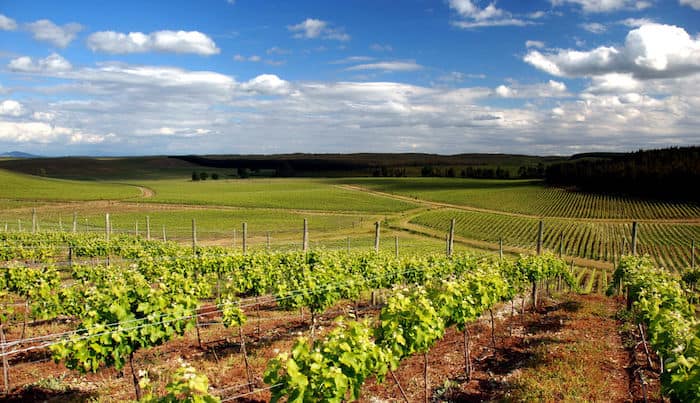
Traditional Chilean wine grape plantings here are somewhat minimal, given the difficulty of wine growing in Bio-Bio. This region gets an excessive amount of rainfall when compared to many of Chile’s Northern wine regions. However, if vintners can navigate the intricacies of avoiding over-saturation and rot, Pinot Noir from the region can be surprisingly refreshing with bright red fruit and crisp acidity.
Malleco Valley
This region receives the most rainfall of any located within Chile currently. Plantings here are quite minimal, and vine growers are even beginning to work and experiment with Gewürztraminer. The weather here is fickle and vineyards require an excessive amount of care to be successful. As such, we aren’t expecting a large volume of production from Malleco currently, but keep an eye on the Pinot Noir as the years progress.
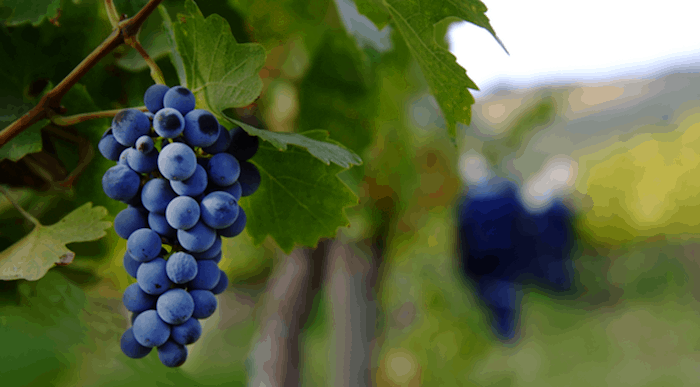
Austral Region
Venturing to the southernmost tip of Chile’s wine territory brings you to the enchanting Austral Region. Known for its dramatic landscapes of soaring mountains, deep fjords, and verdant forests, this region offers a viticultural frontier that is both challenging and exciting. The climate here is cooler and more humid than other Chilean wine regions, with high annual rainfall and a shorter growing season. But, despite these conditions, a new wave of winemakers is embracing the opportunity to craft distinctive wines that are expressive of this unique terroir. The Austral Region is primarily home to Pinot Noir, Chardonnay, and Sauvignon Blanc, but also to lesser-known varieties like Gewürztraminer and Riesling, which show promising results in this cool climate.
Cautín
Nestled within the Araucanía Region, the Cautín Valley stands as a testament to the resilience and adaptability of Chile’s winemaking spirit. This area is among the rainiest and coolest of Chile’s viticultural regions, yet it is home to a thriving wine industry. Winemakers in Cautín have embraced the cool-climate conditions, producing exceptional Pinot Noir, Chardonnay, and Sauvignon Blanc, known for their bright acidity, aromatic intensity, and elegant minerality. Moreover, the region is also gaining recognition for the quality of its sparkling wines, further highlighting the versatility of Cautín’s unique terroir.
Osorno
Tucked away in the Los Lagos Region, the Osorno Valley is a place of stunning natural beauty and burgeoning viticultural promise. This area, known for its volcanic soils, heavy rainfall, and cool climate, is one of Chile’s most challenging wine regions. However, dedicated winemakers are taking on these challenges head-on, producing wines with a distinct character and sense of place. Varieties such as Riesling, Gewürztraminer, and Sauvignon Blanc are showing tremendous potential, yielding wines with high acidity, complex aromatics, and a distinctive minerality, which all speak to the unique conditions of the Osorno Valley. It’s an exciting frontier for Chilean wine, inviting wine lovers to explore the remarkable diversity and depth of Chile’s southern reaches.
Wine Grape Varieties Grown in Chile
Red Wines of Chile
Cabernet Sauvignon
Merlot
Syrah
Carmenère
Mission
Carignan
White Wines of Chile
Sauvignon Blanc
Chardonnay
Sauvignon Gris
Muscat de Alexandria
Well Known Chilean Wine Brands and Wineries
Some of the more famous winemakers that have received substantial notoriety in the past 5 years include Concha y Toro, Viña Maipo, Casa Silva, Matetic Vineyards, Viña Miguel Torres, Altair and Viña Errázuriz, San Pedro and Santa Rita.
While Concha y Toro and Santa Rita may be more well known domestically for producing consistent, good value table wines – some of Chile’s more boutique and obscure wineries offer more refined, complex and well-balanced wines across several grape varieties. We’ll discuss some of our top picks in a separate post.
What’s your feeling about wine from Chile? While it’s been undervalued since the 1980s, progressive winemakers are making serious strides to produce wines of excessive quality. Markets in Japan, Korea and China are now looking at New World Chilean wine as a serious competitor to even the fanciest of Old World Bordeaux’s. Folks are even considering certain Chilean Cabernet Sauvignon to be superior to elegant Cabs from Napa Valley.
Map of Chilean Wine Country provided by Wines of Chile. Additional sources and references from Wines of Chile, Jancis Robinson and Trekking Chile.
You are reading “Learn All About Chile’s Various Wine Regions and Grape Varieties” Back To Top
chilean wine, wine regions of Chile: educational wine articles
If you enjoyed this guide, make sure you register to become a Winetraveler for free! You’ll get access to all of our content and interact with other Winetravelers and for travel inspiration around the world. Be sure to follow along with us on Twitter and Instagram as we continue to feature more exciting destinations.
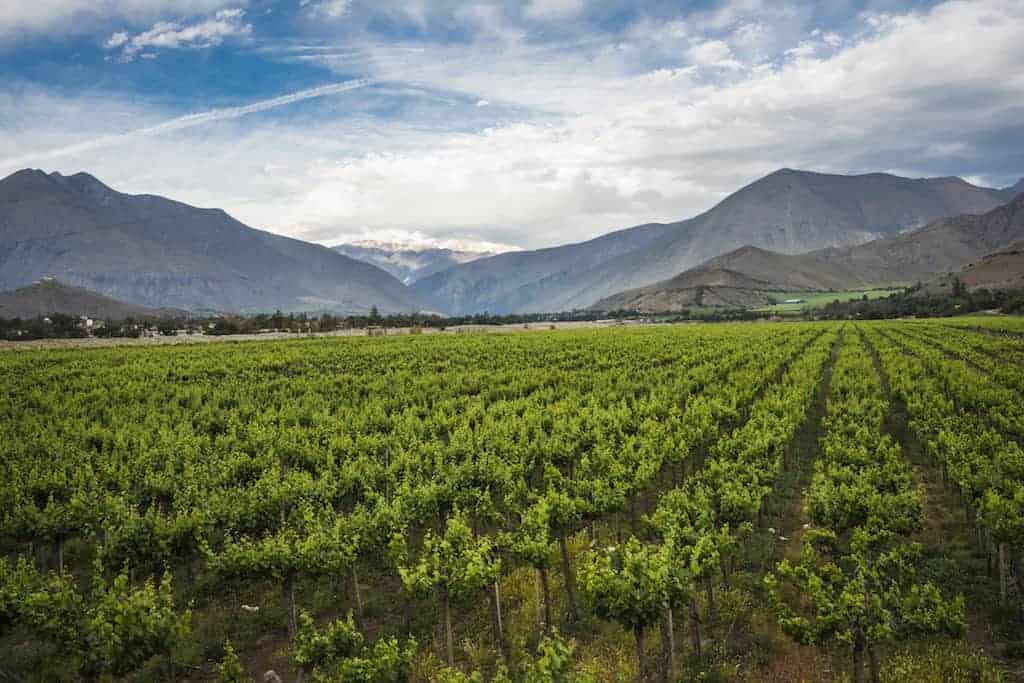
[…] Chilean Wine Regions […]